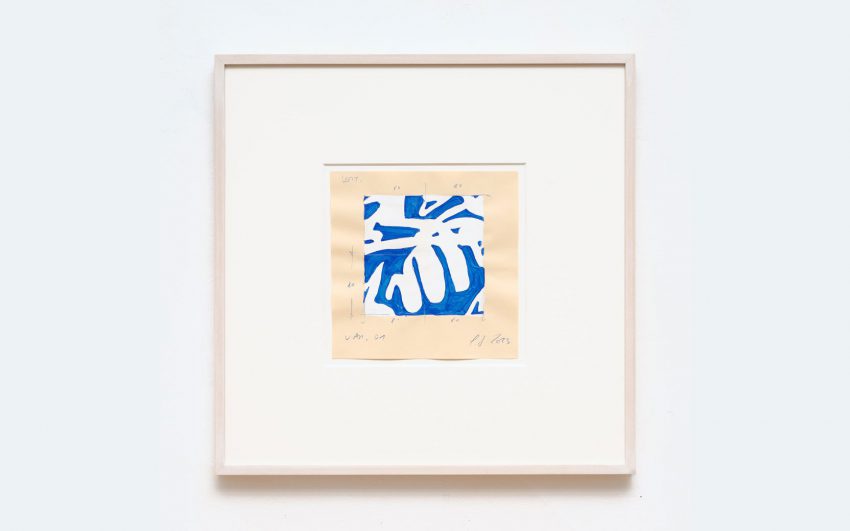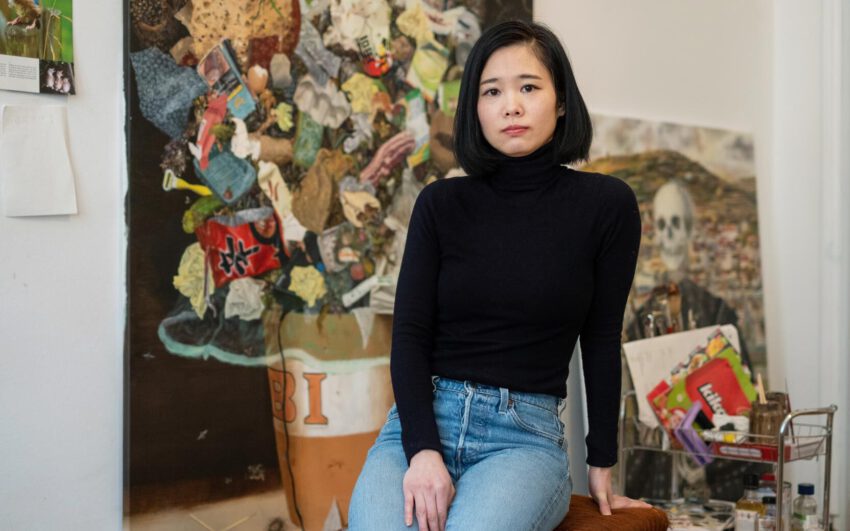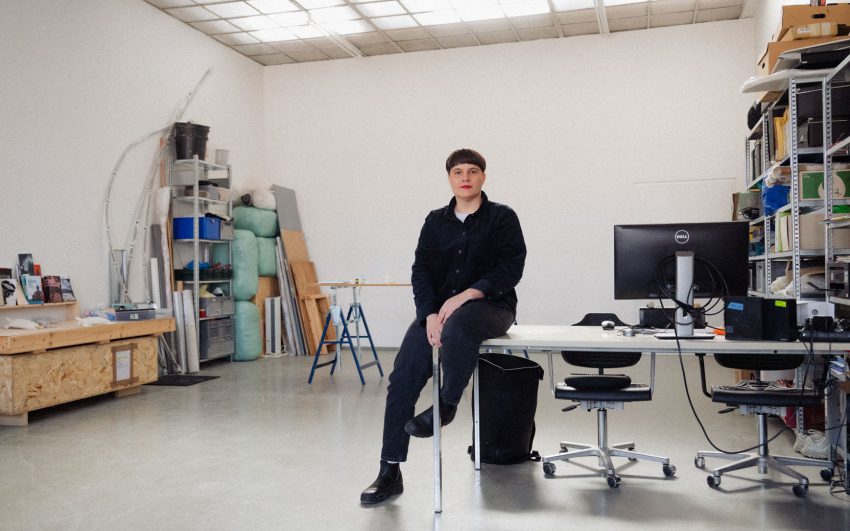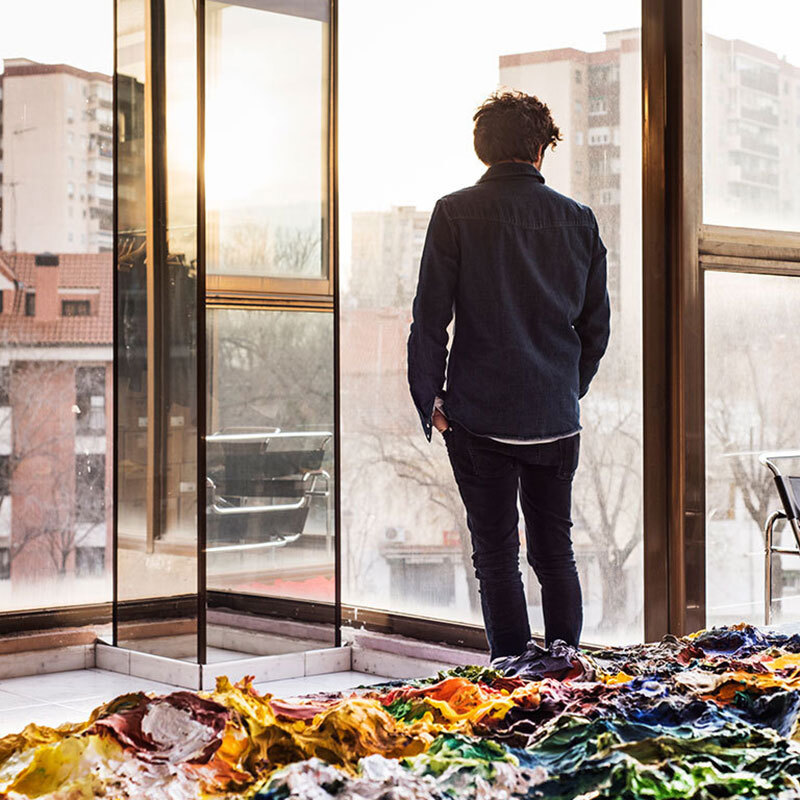The scene for contemporary art in Europe’s North is expanding and developing new dynamics as international collectors are watching the scene. With Nordic Notes we regularly cast the eye on the Nordic art and cultural scene, portraying its important actors.
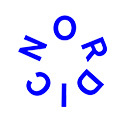
In the Sámi culture, reindeer play a core role in almost every aspect of living. For artist Máret Ánne Sara the skulls and other body parts of these animals, mostly dead, are the center of her work. Her art might be shocking or intimidating to some, but it is the means by which Sara tells difficult, brutal stories of colonialism and the industrial devastation of Sámi areas; but it also expresses hope for future generations.
Máret, you are from a reindeer herding family in Kautokeino. At what point did you decide to become an artist?
My creativity and thinking comes from the way I have been brought up based on Sámi philosophy and worldviews. Even as a child, I appreciated the way my people have always managed and found our way to survive in the severe Arctic climate, far from any system of infrastructure. When you live nomadically, with minimal modern resources you have to be very adaptable. For example, as a child, I never found it satisfying to play with ready-made toys, because someone had already defined the potential for the toy, and therefore for me, the game was over before it started.When my younger brothers were little, I, with the best of intentions, tried to make them different kinds of toys and to convey this process to them. To this day, I have never asked, so I’m unsure whether my siblings appreciated my efforts or not.
Reindeer play a key role in your art and in your life itself. What is your first memory of them?
I have no initial recollection of them because they have always been in my life. From the Sámi perspective, we consider the reindeer as our relatives, and we are more or less equal, so as with nature, our reindeer and ourselves are interdependent and it is necessary to have an equal degree of respect for these beings, otherwise everything collapses.
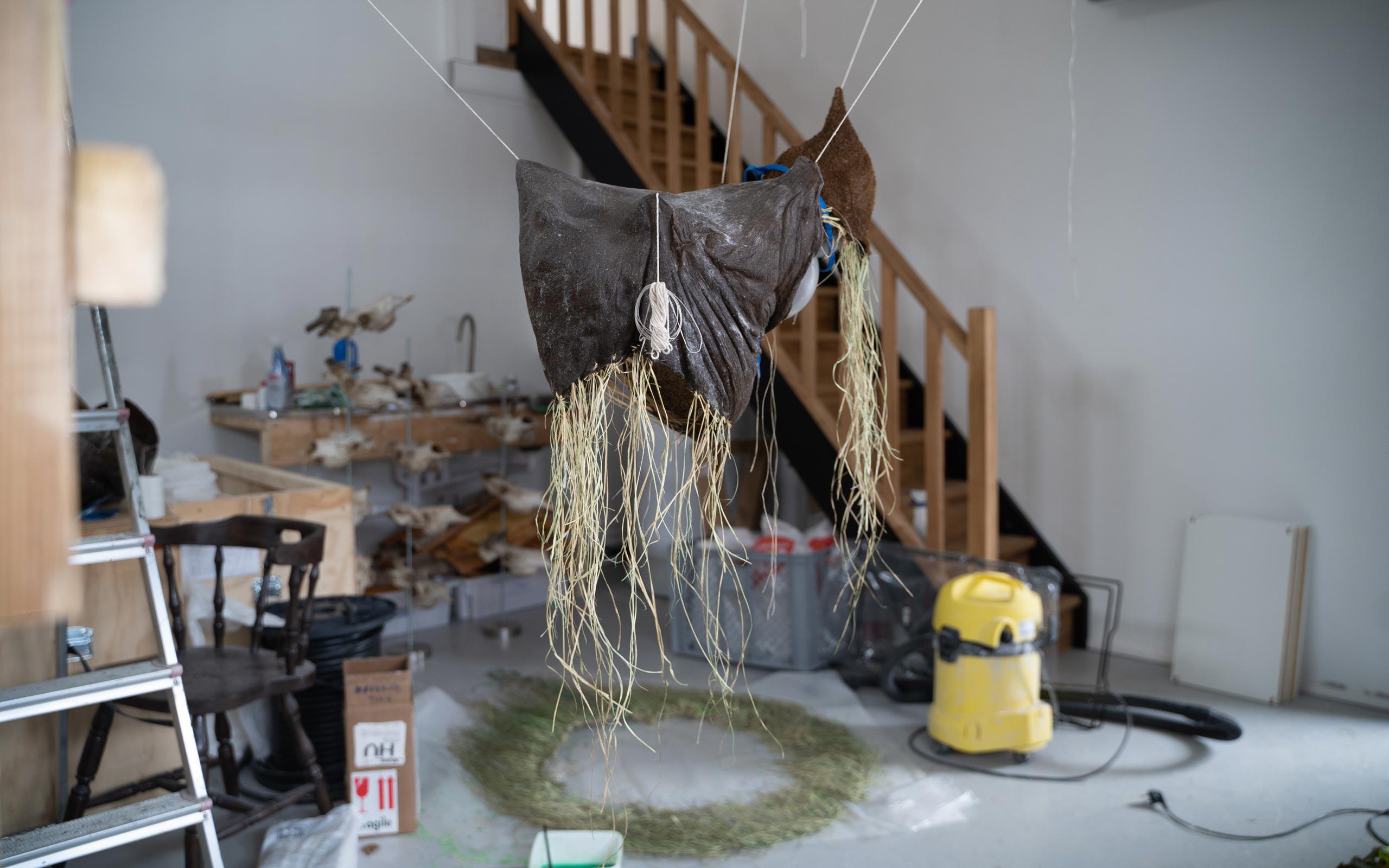
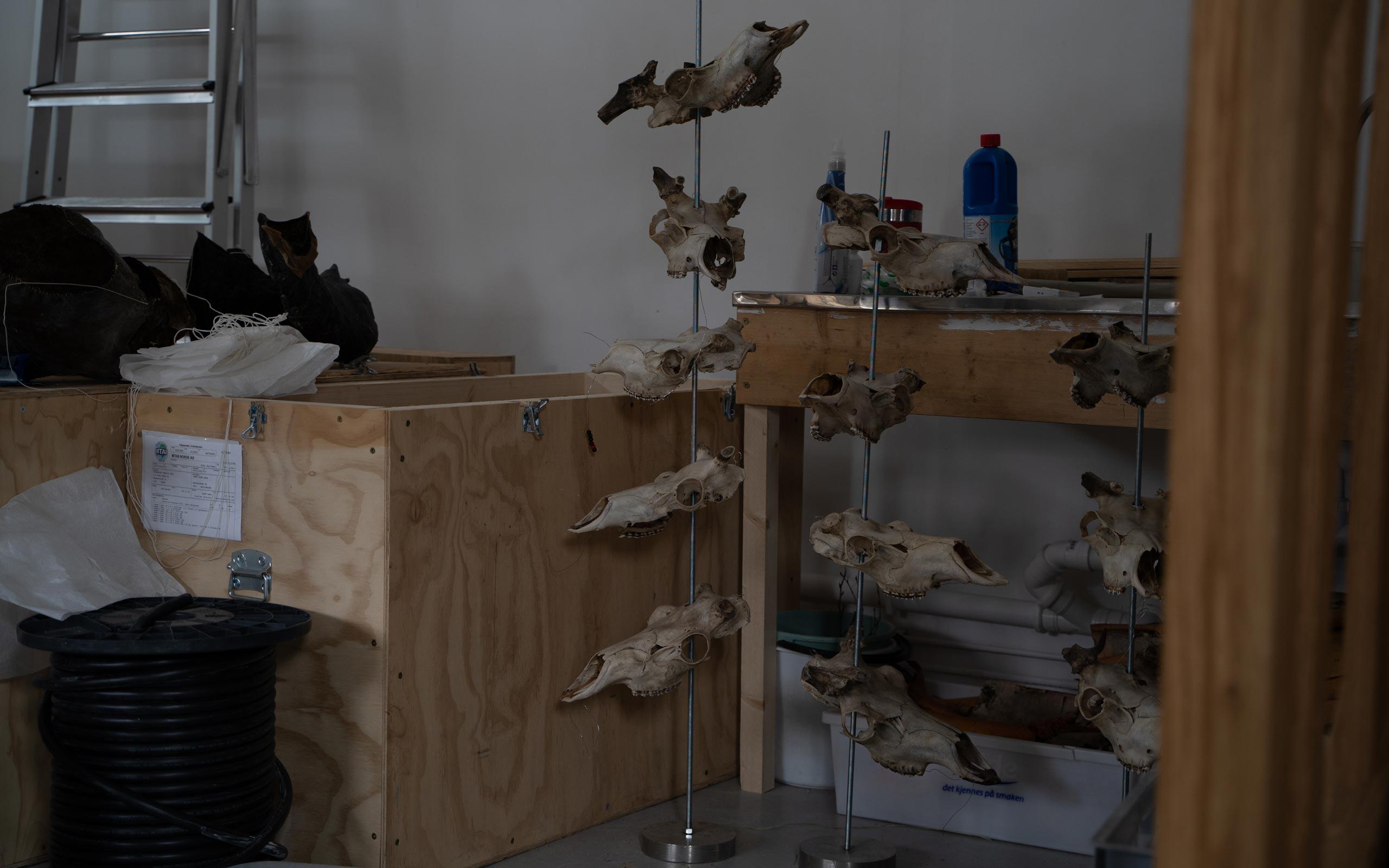
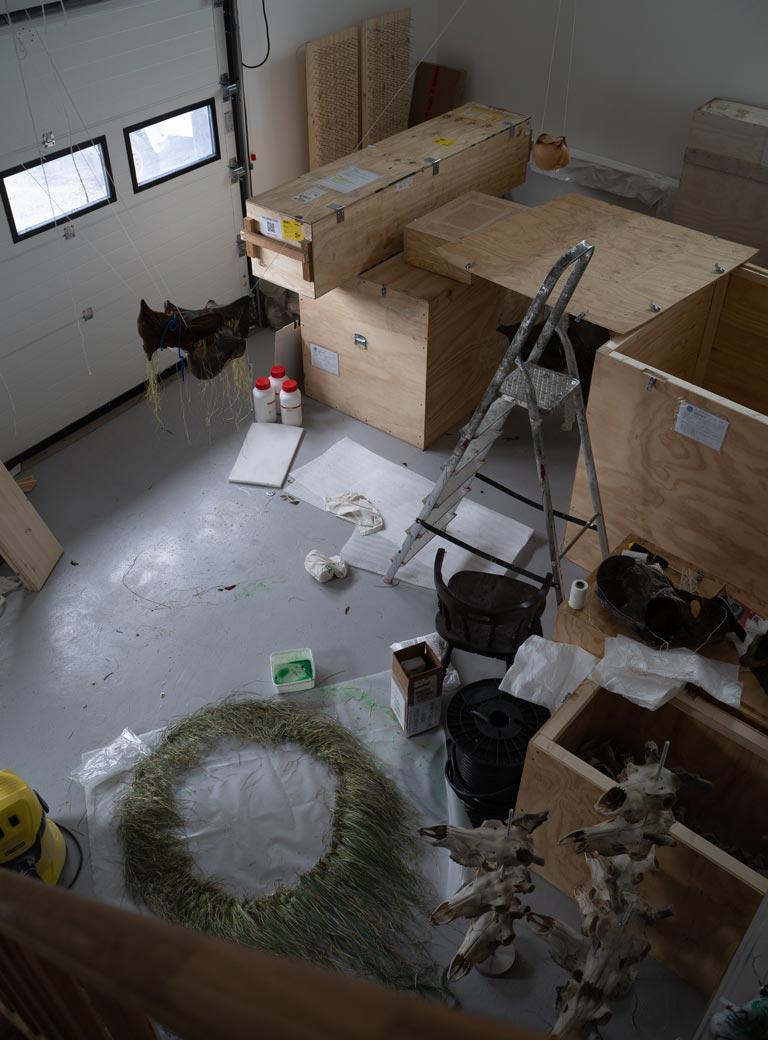
Can you describe the context that shapes your art?
The history of the colonization of the region of Sápmi, is very long and we are still dealing with the aftermath of theimplementation by the Norwegian government of the policy of assimilation of the indigenous Sámi people and the attempted erasure of Sámi culture and identity with the aim of turning us into proper Norwegians. This official policy of brutal racism has been in effect in this country/in Norway for over 100 years and caused great trauma. The Sámi in the neighboring town were not allowed to own land unless they changed their name to one officially considered Norwegian. During the assimilation, children were not allowed to speak the Sámi language in school, and we now have several generations who have completely lost their Sámi identity. Because people wanted the best for their children, many hid their Sámi identities and raised their children as Norwegian. Even though the assimilation has officially ended, racist attitudes continue to exist in Norwegian society and therefore are deeply embedded in the laws, bureaucracy, and social systems of the country.
At what point did you realize that your art could become a political tool?
Since 2012, I’ve been working on different projects where I tried to raise a critical debate about the political prestige project Nordområde satsningen which in reality is nothing but pure industrial exploitation of our grazing lands. I was horrified when I saw the maps of Finnmark (North of Sápmi), my area, which for 10 years had been portrayed as a project in which the government intended to figure out strategies for raising the living standard in the northern areas. But when the maps were published the reality hit us with the realization that the project was never about raising standards of life here. It was about money to be made from the extraction of minerals from the land.
How did these conflicts evolve?
In addition to this, a couple of years later, we received a letter that said that there are too many reindeer in the north of Norway, and further stating that the way to protect the country’s future and the future of Sámi reindeer herding, the government would begin a program of selective slaughter. This constituted a systematic attack on our culture in particular younger people with smaller herds, of which my brother was one, forcing them to slaughter the same percentage as those with large herds and thereby forcing them into bankruptcy; this was, and still is, a very dramatic situation. For my part, I couldn’t accept the fact that no one in the media, the political and legal areas of the country were willing to discuss this matter. This is why art became necessary since nothing else helped. I had to make some kind of artistic statement that was so strong that it would draw attention regardless. My strategy was to start exposing the lack of awareness and to begin retelling our history and in doing so, make positive changes to the bigger picture,on a larger scale politically and legally.
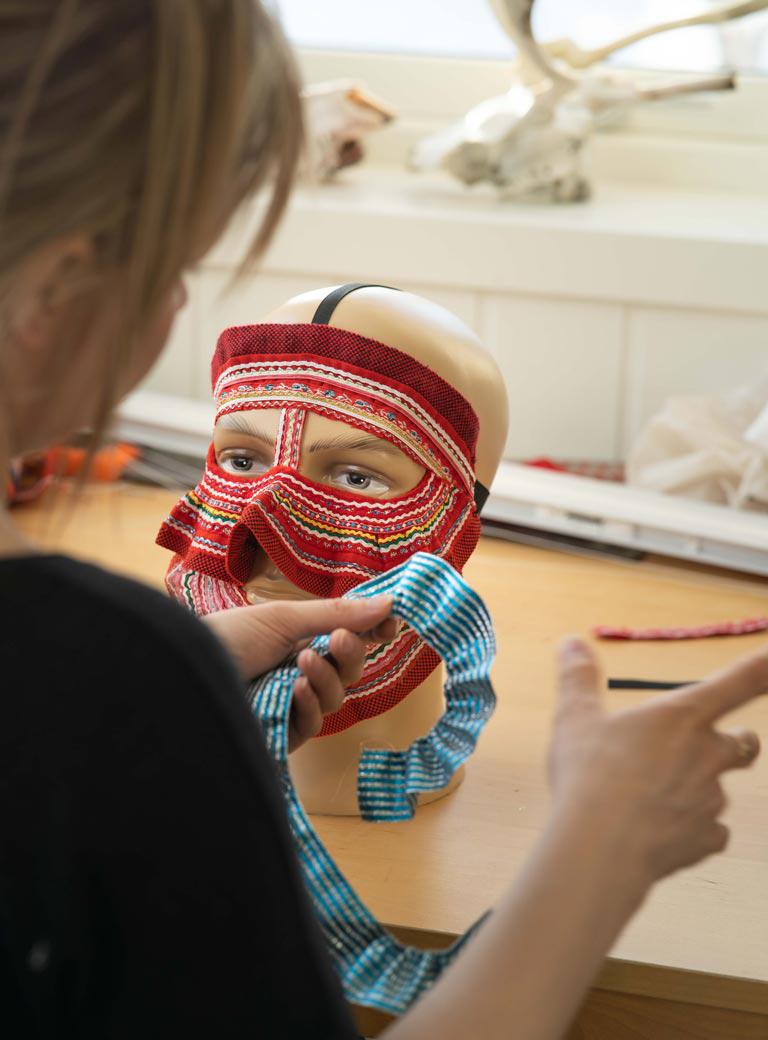
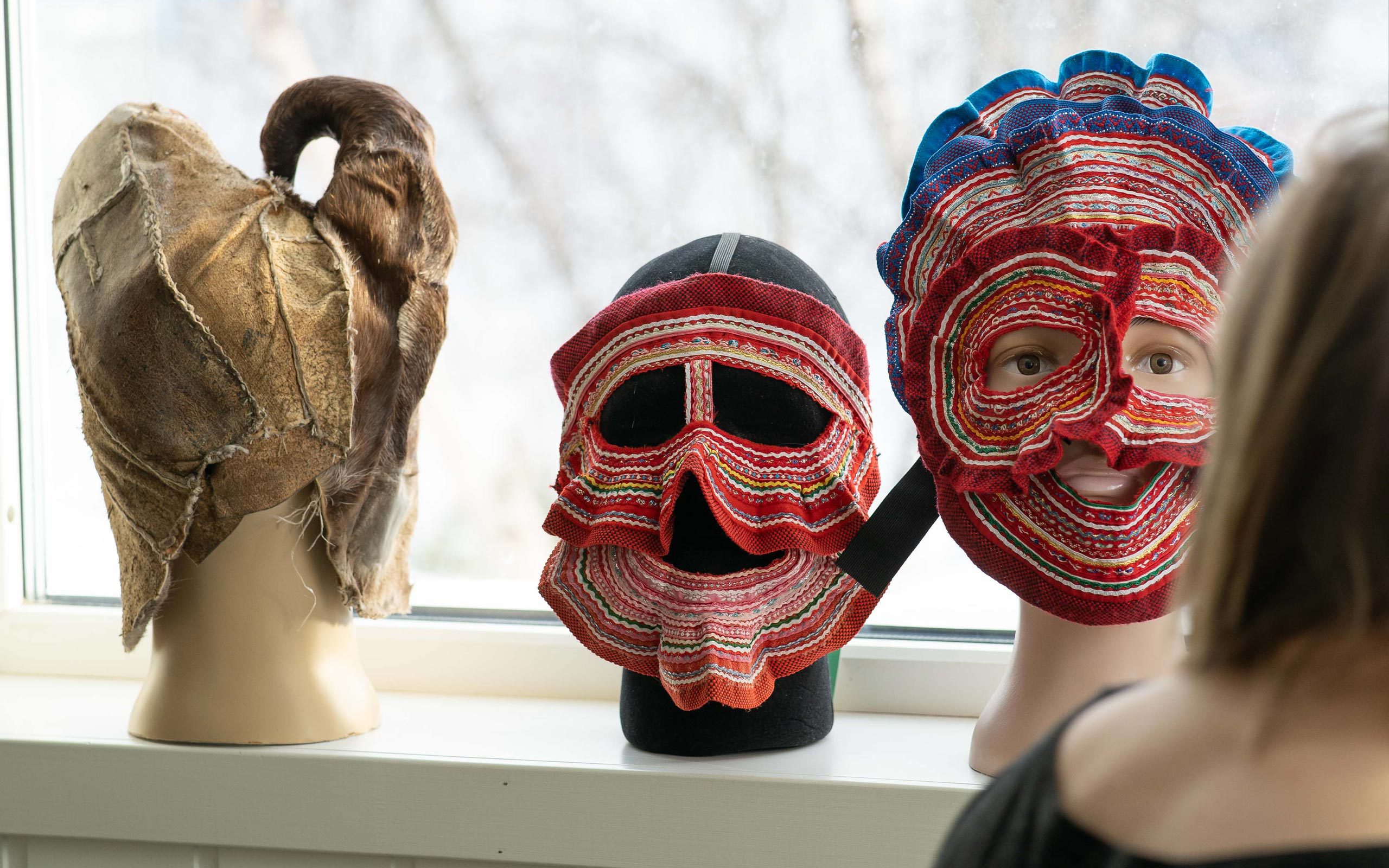
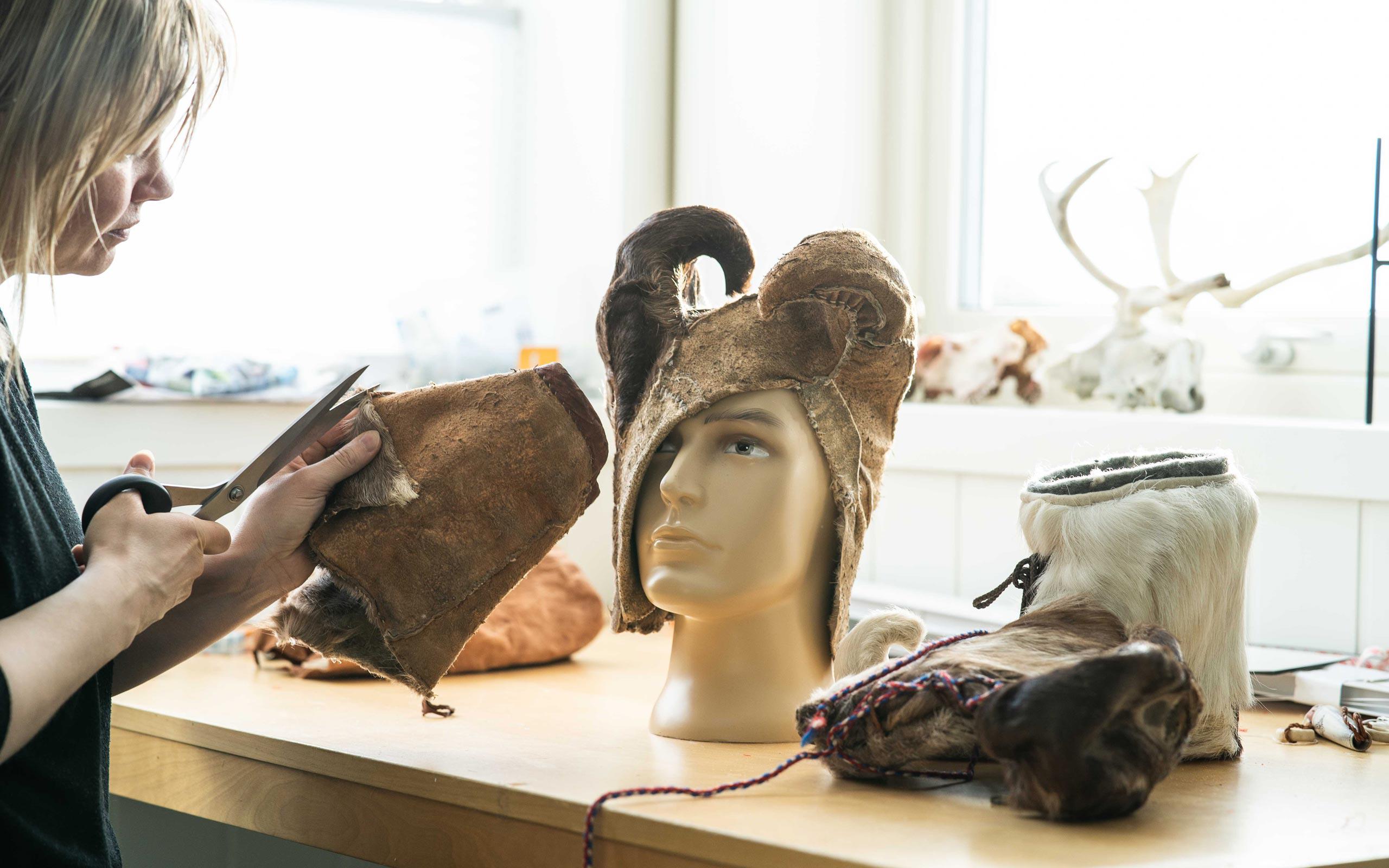
This form of protest became Pile o'Sápmi, your most famous work. How did it come together?
It is certainly the biggest and most complex and most dramatic project that I have worked on. It became a desperate scream for help, for attention, and a desperate need to create a critical debate and awareness about what was going on. Because in the scheme of things, the reindeer Sámi society is so small, many people are unaware of what is happening. People are being attacked on a level that pits them against their own society, their own families, and driven almost to bankruptcy, there is a sense of such vulnerability that few will go public with their story because it’s so painful.
You raised your voice, though, and in a direct way.
My brother Jovsset initiated his public proceedings against the Norwegian state. I took 200 bloody reindeer heads from Kautokeino and drove almost 300 kilometers across Finnmark to Tana and put them up outside the courthouse in the middle of the night, so that they were there when journalists came. Jovsset who was 23 years old at the time, was still young enough to need support, in order to be able to stand against this.
That time your brother won?
Yes, we won the first trial based on human rights, but the Norwegian government would not accept that, they appealed the verdict, and we ended up in the court of appeals in Tromsø. I followed with a slightly different strategy for my project because the location now was further away from the core Sápmi region. We won again in the court of appeals, this time based upon cultural rights, the government still wouldn’t accept the verdict and appealed again. The Supreme Court in Oslo 2017 was a dark chapter for us personally, and also for Sámi rights. We were told that the government knows what's best for us, and therefore, we have to obey their rules. And we lost the case.
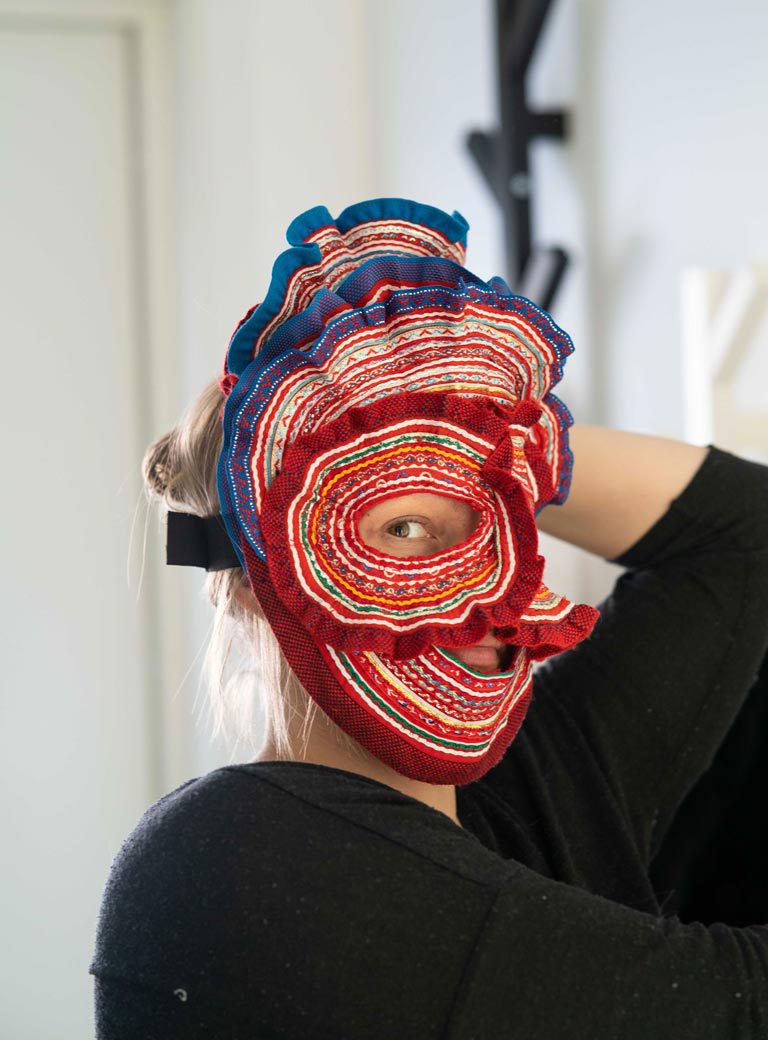
Between the first and second court Pile o'Sápmi Supreme was exhibited internationally at documenta 14 and eventually ended up in the National Museum of Norway. The tapestry of 400 reindeer skulls hangs like a huge flag. If you stand close, the bullet holes are visible. How did you feel about the government acquiring your art?
It was very difficult for me that the National Museum of Norway wished to acquire this piece for their collection. I had been negotiating with them for two years. For me it’s very important that we can always be aware of these processes that are happening even though we cannot see them all the time. My main motivation was that this piece should hangin the National Museum at the center of power of this country. We had to negotiate, among other things, about forbidding in effect, the censoring of the work and of this story by for instance placing the work in storage and thereby making it unavailable to be viewed. I was not able to reach an agreement with them to guarantee permanent display, so a second-best option was agreed upon, wherein if the decision was made to take the work down from display at the National Museum, it must be offered to Sápmi, for the Sámi to see and think about it. I have spent so many years struggling to make this situation more or less comprehensible to others.
At the Venice Biennale in 2022, where you and two other artists represented Sámi, “The Nordic Pavilion” was renamed “The Sámi Pavilion” for the first time. What experience do you take from this?
In retrospect, I think it was great! But at that time, it was a devastating process to experience as a Sámi. When I got the invitation, I was hesitant, because I had done it for so many years, and I had used all of myself and tried all that I could, to scream my lungs out, to be heard, to help and to create change, and nothing helped. But then it became quite evident to me that to be able to say “yes”, I had to have a useful mission, not only for myself, but also in relation to this context and the case. It was important for me to think of new strategies to build up myself as a human being, my spirit, but also to build a hope for coming generations and for my culture at large. I remember I was pregnant with my first and only child, so these questions became even more real and important to me.
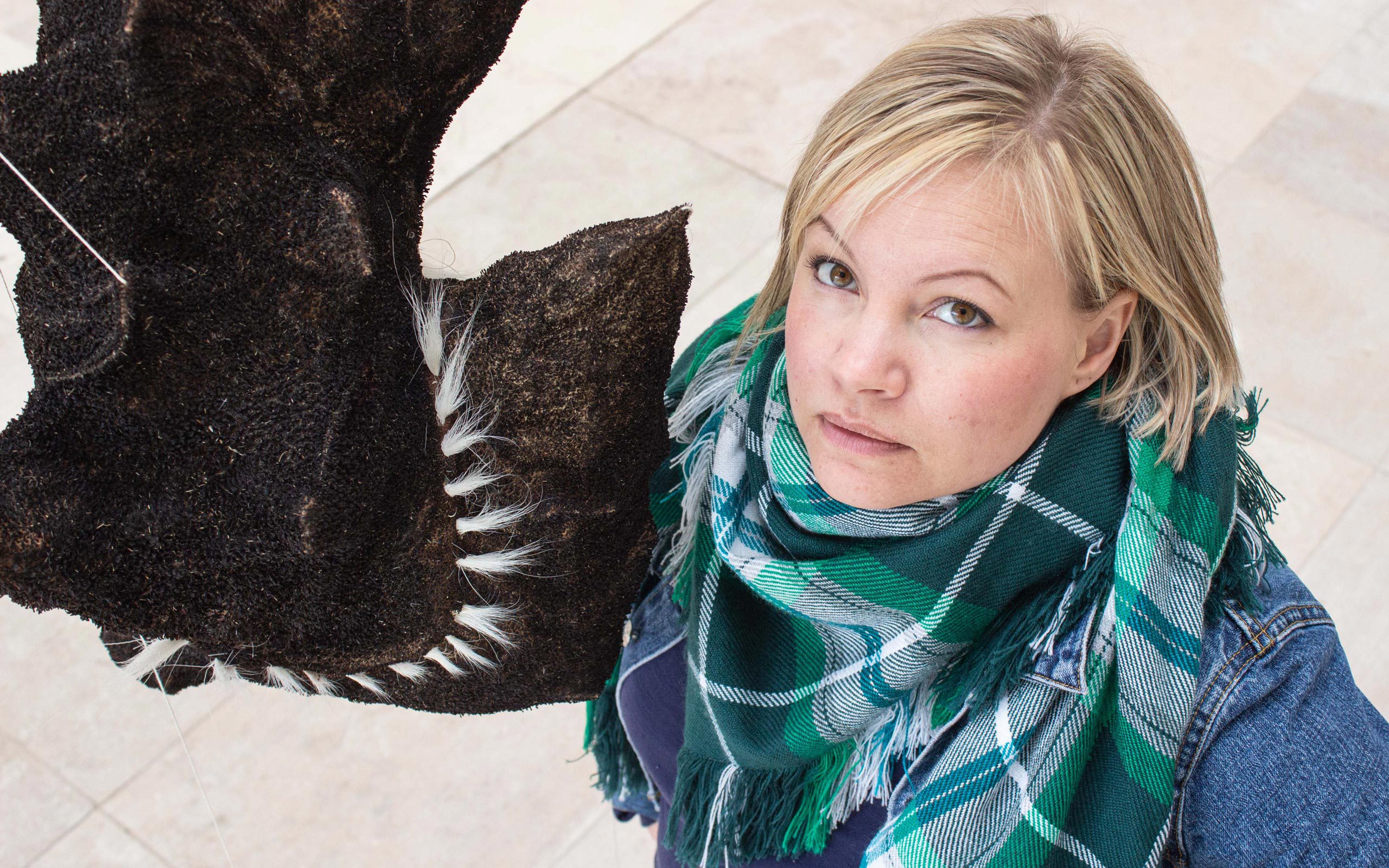
Photo: Alexandra Harald
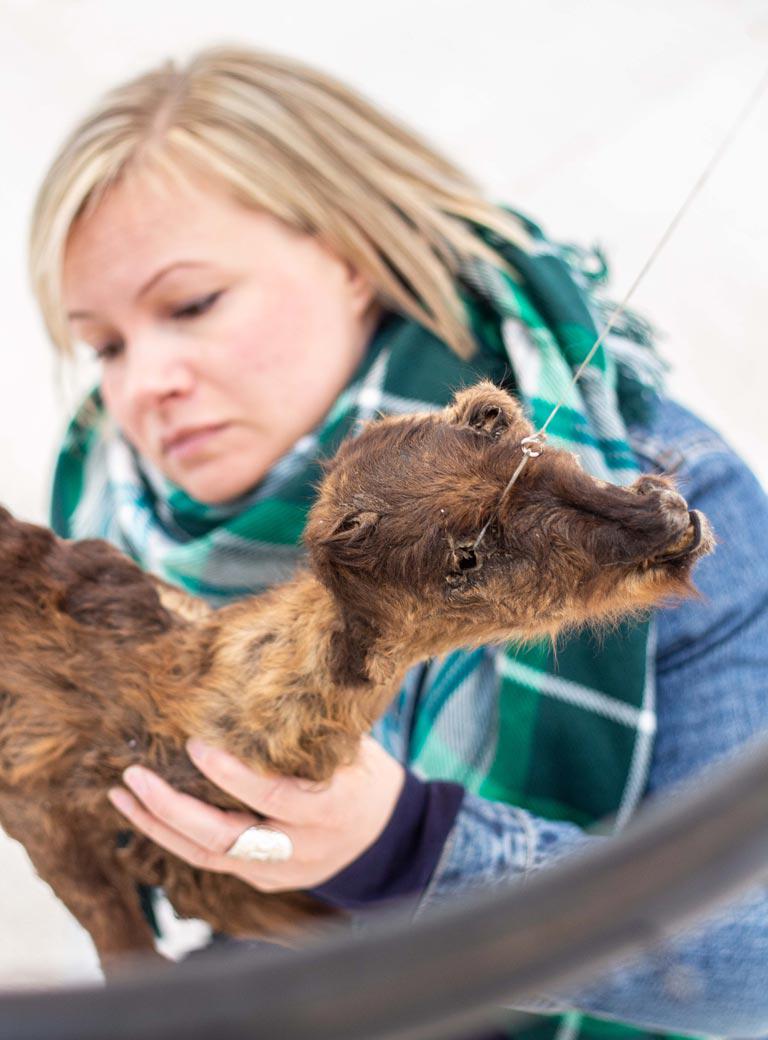
Photo: Alexandra Harald
The centerpiece of your artwork is red calves incorporated in a spiral mobile called Ale Suova Sielu Sáiget/ Don’t let your soul be torn. How does this resonate with the idea of hope for the future?
The Sámi are struggling with climate change. Winters these days can be very brutal. That was one of those winters when the shift in temperature had created ice layers in the snow. The reindeer were not able to dig through these layers of ice to reach food in the ground underneath. We faced the dramatic situation of possible mass starvation ofour reindeer. For so many years, we were not believed when we told of this, but only accused of having too many reindeer and of destruction of the tundra. It had been a tough time, the culling/slaughtering process, with the slaughtering process, losing the legal battles, addressing the climate crisis and then being faced with the massstarvation of the remaining reindeer. This heaviness was hanging above our heads. I remember I was talking to a reindeer herder, and he said: May is coming. In Sámi language May is translated as the calf month because it’s the month in which the calves are born. His words were so simple. He said that once the red calves arrive, you forget all the struggles, and that was so uplifting for me, it was like this Hallelujah moment, because I had spent so much time trying to find what could physically manifest hope in my immediate society. And there it was. The red calf.
In the midst of this hope, the installation has a strong trace of sorrow.
There’s always the subliminal layer of devastation brought about through colonialism. With the May month of calves being born, we breathe in the optimism and hope that the calves bring to us, though there’s also the trauma that comes from the threat of predators. In Norway predators are heavily protected by law and their numbers are so poorly regulated, that in many areas a great threat to reindeer calving is presented. That’s why this work ultimately became this crazy carousel of beauty and grotesqueness, hope and trauma, life and death. I made it as a huge baby mobile as a gift to my son to welcome him to this world.
Another artwork Gutted – Gávogálši is a constellation of dried reindeer stomachs. You talk about instinctive intelligence. What can we learn about it from this piece?
In Sámi language, this is called Gapmu. I don’t know how to translate it into English other than “gut feeling”, but in Sámi thinking I have been taught to listen to “Gapmu” very carefully, even though it’s difficult to explain this scientifically. I know that Western academic studies have now started to investigate the stomach as the second brain of the body, as a source of intelligent information. I think this is also a good example of how indigenous knowledge is sincere. But it’s not validated until it’s been filtered through western academia.
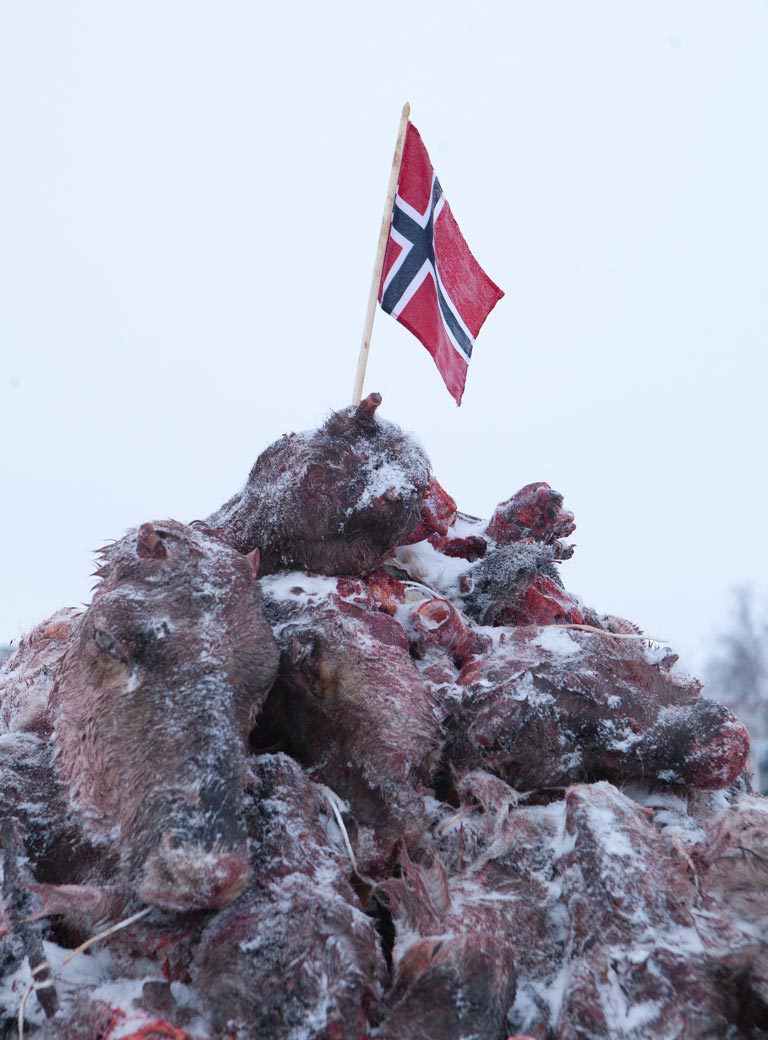
Photo: Iris Egilsdatter
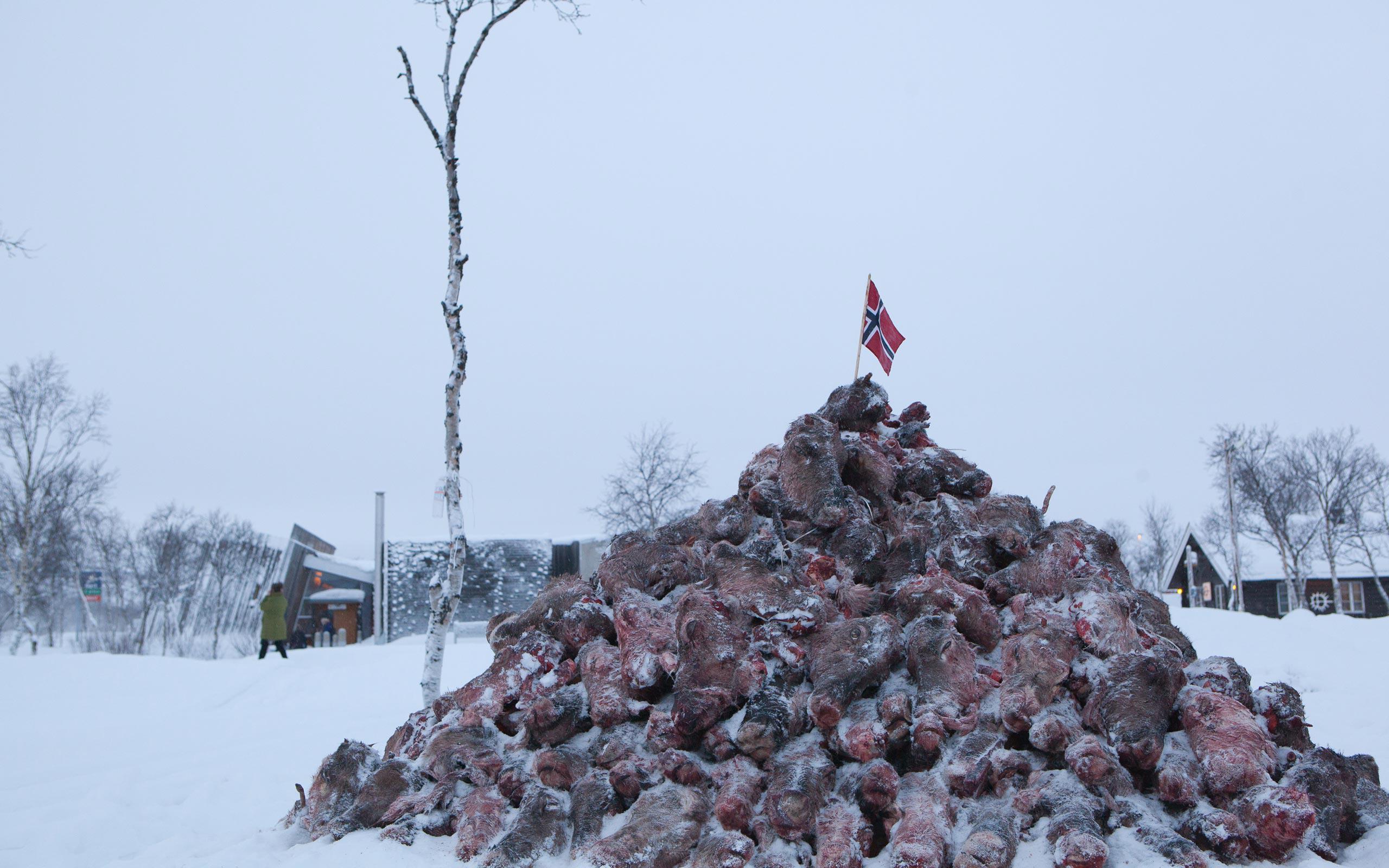
Photo: Iris Egilsdatter
One of your installations could not only be seen but smelled. What was the purpose of this immersion for the audience?
In Du-ššan-ahttanu-ššan, which consists of two suspended, cloud-like forms of reindeer sinews, we have been trying to reproduce the smell of stressed and scared reindeer. It is a very unpleasant smell they produce in their bodies when they are scared or pressured beyond their comfort zone. For me this process of working with this smell begins with a memory memory of my father from almost 30 years ago, when we were in the police office in Hammerfest. When the oil and gas industry of Snøvit was established, it created a lot of expansion in the city and the presence of reindeer became more and more unwelcome. There is a long tradition of litigation related to reindeer simply because they exist there; they shit and piss and eat the pretty flowers that people plant there for pleasure.
So, there was a property damage claim against your family?
Yes. It was a sort of interrogation and I just remember the way my father changed in front of my eyes. In our natural circumstances he was always a superhero to me. But sitting there, under cross-examination and subject to accusation by the chief of police in his intimidating uniform, confined within the police station walls, obliged to sit before the chief’sdesk, accused and interrogated simply for living in his own area, not only his voice, body language and facial expression changed, but his smell also changed; I never thought about it that deeply until I started this process. I began to connect this experience with that of the reindeer when threatened and pressured beyond their zone of comfort. And it became clear to me that this is actually communication on a totally different level. Just as our philosophy is, it’s grounded on that level inasmuch as we are all connected, equal, able to communicate, as we should. I believe that we can still get so much information from our surroundings, from other life forms. We are simply no longer able to understand it, or even to recognize it. This is why it has been such an important memory for me. It was an instinctive way of saying to your surroundings that this is not a good situation, there’s discomfort and even danger.
What was the reception to all of these topics from the audience at the Venice Biennale?
I think many people were drawn to the tactility of the materials. There are not so many people nowadays who have ever seen a stomach or reindeer calves. So, the materiality was interesting, and the smell was very impactful. Perhaps I was not really aware of how strong the smell is as a medium, because some people were crying when they encountered it. It hits you so directly, triggering memories, bodily and instinctive responses. It’s one of the most effective and strongest ways of communicating. For years now, I’ve felt that there is such desperation globally, and that people are in a great need of new coping strategies. That’s why I wanted to show a part of indigenous thinking and how that can be one of the sincerest means of creating sustainable strategies; furthermore, I believe the change has to be very philosophical.
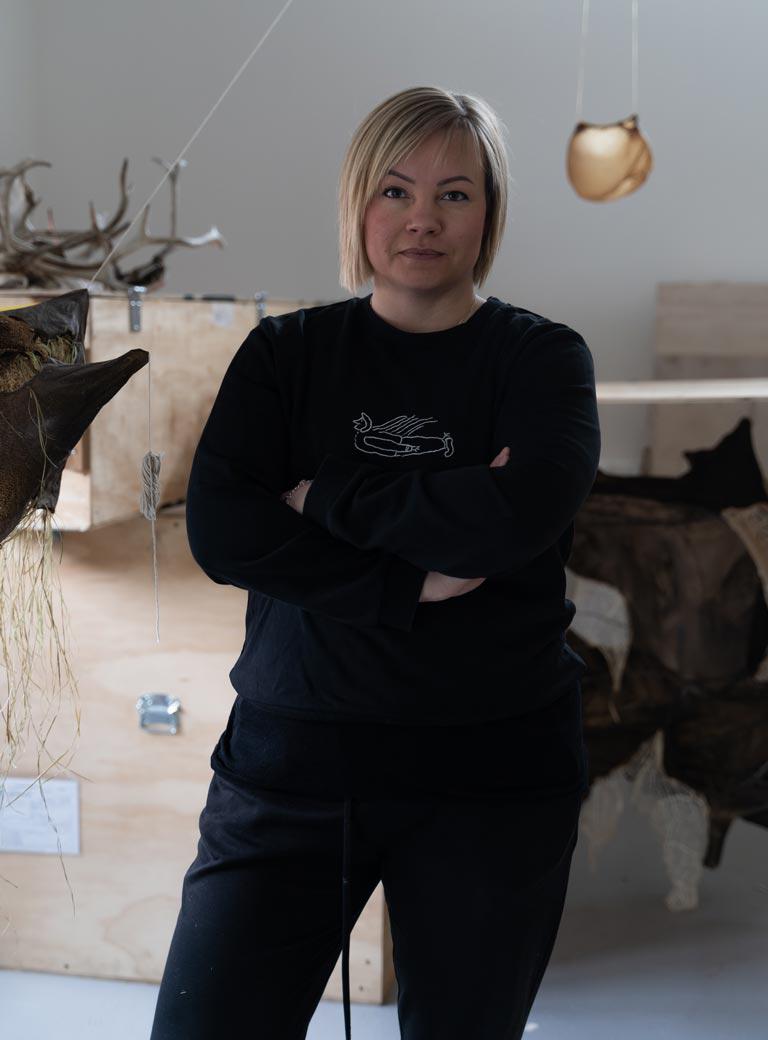
Looking to the future, what are you working on presently?
This year, I really have had to step back a little bit. I have spent the year developing the Dáiddadállu Artist Collective, which is a huge project and network with close to 20 Sámi artists; it’s a project I have been working on for 9 years now. I have also been working on my new studio. I’m taking part in several competitions, which are about bringing ideas to public art. This is totally new for me. I think it’s very necessary to just calm down a little bit and then come back stronger once my batteries are recharged.
You have exhibited visual art since 2003. What would you say to yourself 20 years ago?
“Keep doing what you’re doing. Be true to that, listen to the instinctive intellect, to the messages you receive and allow them to guide you.” Otherwise, art doesn’t have much meaning to me. I don’t create art just to entertain myself. For me, art is my biggest and most effective voice and tool to tackle the most difficult things in life.
Interview: Anton Isyukov
Photos: Karl Alfred Larsen



